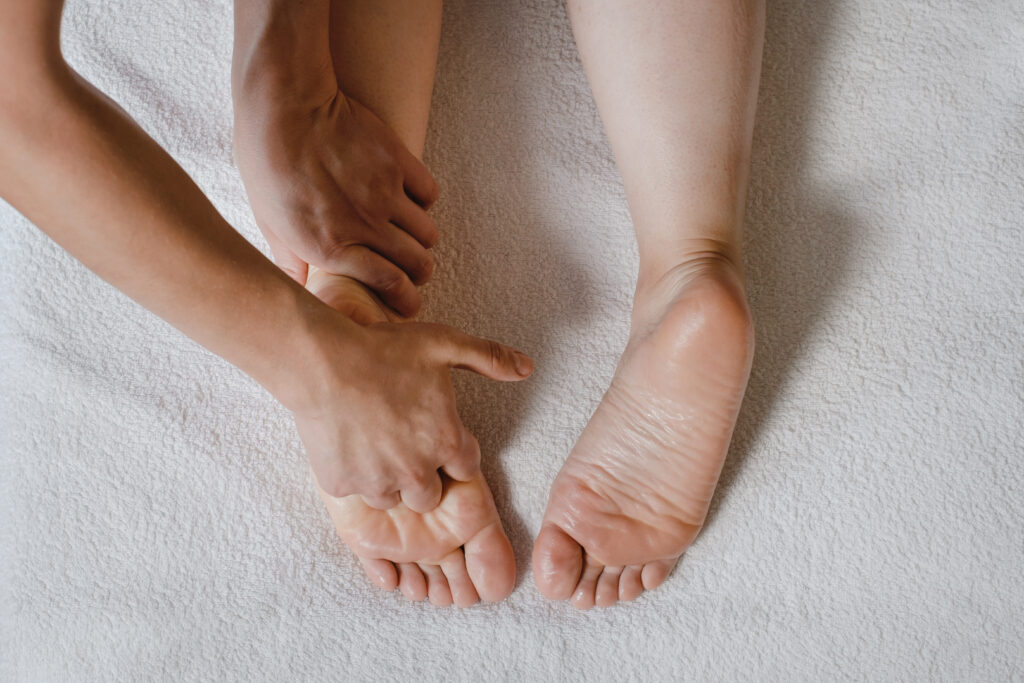Water retention, or edema, is a common condition where excess fluid accumulates in the body’s tissues, leading to swelling, bloating, and discomfort. It can affect the legs, feet, ankles, abdomen, or even the hands. Causes range from diet and hormonal changes to medical conditions and lifestyle patterns.
While conventional treatments exist, there are also sustainable, natural, and preventative approaches that can improve circulation, reduce swelling, and support overall health without relying on quick, disposable fixes.
Common Causes of Water Retention
- Diet: High salt, processed foods, and added sugars encourage the body to hold on to water.
- Hormonal changes: Menstrual cycles, pregnancy, or imbalances may trigger fluid shifts.
- Inactivity: Prolonged sitting or standing (office jobs, retail, driving) limits circulation.
- Medications: Certain blood pressure drugs and NSAIDs list edema as a side effect.
- Medical conditions: Heart, liver, or kidney issues can impair the body’s ability to regulate fluid.
- Hot weather: Heat causes blood vessels to expand, leading to swelling in legs and feet.
- Dehydration: Ironically, not drinking enough water can make the body hold onto fluid.
Effects of Water Retention
- Bloating and discomfort
- Swelling in legs, feet, and ankles
- Reduced mobility or flexibility
- Pain or heaviness in affected areas
- Potential warning sign of underlying health issues
Sustainable and Natural Solutions
1. Reduce Salt Intake Naturally
Instead of relying on ultra-processed low-sodium foods (which can create waste from packaging), focus on whole, unprocessed foods. Herbs, spices, citrus, and vinegar can season meals without excess sodium.
2. Stay Hydrated with Purpose
Drink 8–10 glasses of water daily, but reduce reliance on single-use plastic bottles. Opt for reusable bottles and filtered tap water where possible to align health with sustainability. Herbal teas like dandelion or green tea can act as natural mild diuretics.
3. Eat a Plant-Rich, Anti-Inflammatory Diet
Fiber-rich foods (leafy greens, legumes, berries) support fluid balance while reducing inflammation. Potassium-rich foods — bananas, avocados, sweet potatoes — help offset sodium. This shift toward more plant-based eating also reduces the carbon footprint of your diet.
4. Exercise and Movement
Daily activity boosts circulation and helps the lymphatic system move fluid. Walking, swimming, cycling, and even gentle yoga are low-impact options. Bonus: choosing walking or cycling over driving also reduces emissions while supporting circulation.
5. Elevate and Compress
Compression stockings and leg elevation can reduce swelling. Choose durable, reusable compression garments instead of single-use wraps or plastics.
6. Reduce Stress the Natural Way
Chronic stress hormones can worsen water retention. Sustainable stress-relievers include mindfulness, yoga, gardening, journaling, or spending time outdoors — all low-impact practices with long-term health benefits.
7. Consider Sustainable Natural Remedies
- Dandelion root tea: Mild diuretic, traditionally used for water retention.
- Magnesium-rich foods: Nuts, seeds, leafy greens help regulate fluid balance.
- Parsley, ginger, or hibiscus tea: Gentle, natural aids for bloating and circulation.
(Always check with a healthcare provider if you have underlying conditions or take medications.)
8. Medical Guidance When Needed
If water retention is severe, persistent, or linked to underlying health issues, seek professional care. Sustainable health means prevention and natural support where possible — but also knowing when medical treatment is necessary.
Final Thoughts
Water retention is common, but it doesn’t have to disrupt your life. By adopting natural, sustainable strategies — such as reducing processed foods, hydrating wisely, embracing movement, and choosing plant-rich diets — you support your body and the planet simultaneously.
Simple daily shifts, like carrying a reusable water bottle, walking more, or swapping salt for herbs, create ripples that improve health and reduce waste. Together, those ripples can move us closer to a healthier, more sustainable lifestyle.









Reader Interactions